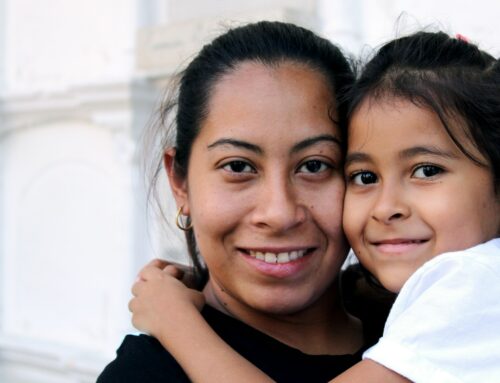You’ve got your tickets, your passports, your visas; everything is packed and you’re ready to go. But what about Maggie? Don’t forget man’s best friend! Moving to Canada with your pets can be challenging; and like every other aspect of your move, you’ll need to plan and prepare for it.
The cost of relocating your pets to Canada can, in many cases, be as, or even more expensive than moving yourself. For common pets like cats and dogs, the process is fairly straightforward, but even so, there is a whole preparation process and many things you will need to keep in mind. The following article should provide you all the information you need to make it a smooth transition for you and your furry companion.
Travelling with pets
The first stage of getting your four-legged friend into Canada will be the travel, most likely by air. This means preparing your pet for the flight, but more importantly, it involves the arrival and acclimation in a new land. Just like humans, animals have to undergo a process of adjustment when they come to a new country. In order to make the transition easier, here are a few tips to consider.
Preparing for the flight:
- Apart from administrative matters, don’t forget that when you travel with pets, they can get just as sick as you. To prevent that, you may consider carrying some medicine with you.
- Remember that you can’t always travel with your cat or dog on the plane, depending on the companies; you might be able to keep a small dog or a cat with you in the cabin, while bigger ones will have to be in the checked baggage compartment.
- Contact your company soon enough to ensure your pet will be on the same flight as yours and so that you know the fares.
- Some companies don’t travel with pets during the peak winter period and most of them assume no responsibility for the care of feeding of the pets while in transit.
Upon arrival:
- Make sure your pet has an identification tag with a phone number where you can be reached in case he or she gets lost.
- Try keeping your cat in just one room, for a while with their litter box, toys, food and water – this will make your pet feel safe, and make the adjusting period much shorter.
- When you arrive in Canada with your dog, try to keep a routine while the pooch adjusts to its new home.
- You may not be able to find your favorite pet food in your new city, so think about bringing some in your suitcase, and mixing it with a new brand so your pet can get used to the new taste.
- If your cat was allowed to wander outdoors, you may want to keep it inside for a few months until it learns where its new home is, and how to get there.
- Once relocated to Canada, acclimatizing your dog is going to be necessary, especially if you have come from a warm climate into the winter months. (Same goes for cats of course, if it’s an outdoor cat.)
- A dog jacket will be a useful in helping them adjust to the cold winters.
- Animal booties are a good investment because the salt on the road can hurt the paws of your pet, as if it is their first winter, they will not have built up callous’s for the ice and snow.
- Canada has many wild animals, and not all of them will think your pet is a friend. If you are going to allow your cat to go outside, keep this is mind, and make sure it has not been declawed so it can protect itself if necessary.
- Stores such as Nature Pet and Mondou are two stores where you will be able to find beds, food, toys, etc, for your dog or cat that you could not bring with your from your home country.
Importing a pet to Canada
In addition to the logistics of travel and environmental adjustment, the government has a set of administrative requirements that you’ll need to be aware of when entering Canada with your pets. For people bringing less common pets, such as birds, lizards, horses or insects, you may find them more challenging to import, or restricted altogether. Check with Inspection Canada for specific policies concerning your animal.
Importing a cat or dog to Canada is a relatively simple procedure, but the Canadian Food Inspection Agency (CFIA) does regulate the process closely. You will need to have an up-to-date veterinary record or letter, and proof vaccination.
You can review the complete guidelines by visiting the CFIA online, but for the most common pets (cat and dogs), here’s what you need to know.
- You are NOT required to provide advanced notice of your dog’s arrival, and inspectors are on duty at all points of entry to Canada.
- Cats and dogs entering Canada do NOT have to be quarantined.
- Microchips or tattoo identification is NOT required.
- Depending on the airline, some cats and dogs may require additional documentation for air transit. If you are bringing our pet on an airplane, understand that most airlines have requirements for pets, so be sure to contact the airline. When transporting a pet, there are special requirements about the size of the carrier. It must be large enough for your animal to comfortably lie down. You can learn more about companion animal container guidelines from the International Air Transit Association website.
- Dogs and cats coming to Canada must have all the necessary vaccines. Rabies vaccinations are typically required.
- Cats and dogs coming to Canada are required to have a documentary inspection. During an inspection, an officer ensures the animal does not have visible signs of illness, that vaccinations are current, and that the animal description is a match. In rare cases, imported cats and dogs could require a Canadian Food Inspection Agency (CFIA) inspection. Fees apply to this and they will need to be paid at the time of inspection. According to CFIA, Fees cost $30.00 plus tax for the first animal in the shipment and $5.00 plus tax for each additional animal in the shipment.
- If, when inspected, the animal is found not to have the proper rabies vaccination, it must get the vaccination within two weeks of arrival. This costs $55.00 plus tax for the first animal in the shipment; and $30.00 plus tax for each additional animal.
- Please note that while some pet food is allowed to come into Canada from the United States, imports of pet food from ALL other countries is prohibited.
What is pet culture like in Canada?
Canadians love their pets. You’ll see people out walking their dogs all the time. even in the worst weather. In most Canadian cities, dogs must generally be kept on a leash in public, and you are required to pick up their excrement. Registration and tags are compulsory (they cost about $25 a year) for dogs and encouraged for other pets as well.
Cruelty against animals is taken very seriously in North America and Canada. Federal law punishes abandonment, for example. Organizations against cruelty are numerous and extremely active. If you are interested in knowing more, or if you witness, or suspect an act of cruelty, contact the Society for the Prevention of Cruelty on Animals.
Depending on the type of animal you would like to keep, you might want to check if you’re authorized to keep it without a permit. Read the Regulation on Animals in Captivity (in French). If you want to keep bees, bovines (ox), ovine (sheep), or cervids (deer), or more than five pets, you must be registered as a breeder.
Veterinary clinics are widespread throughout Canada, for vaccinations, neutering, and other procedures. And if you like to spoil your animal, there are many pet stores, even deluxe shops for animals. You can also buy food for cats and dogs at most grocery stores. There are some cafés and restaurants where you can bring your dog, although this generally the exception, and not the rule.
What about bringing plants into Canada?
So you’re not an animal person? We understand. But what about that bonsai tree you’ve been pruning and nurturing for the last decade? The Canadian government also regulates the importation of plants and vegetation. Check the Canadian Food Inspection Agency website to see the complete guidelines and policy directives for horticulture crops. But generally speaking, restrictions and prohibitions really only apply to very specific invasive species or those especially prone to pests. So your miniature maple tree will be just fine.
Also check out our Blog articles on “Relocating a dog to Canada” and “Relocating a cat to Canada“.
Photo Credit: Unsplash







Leave A Comment